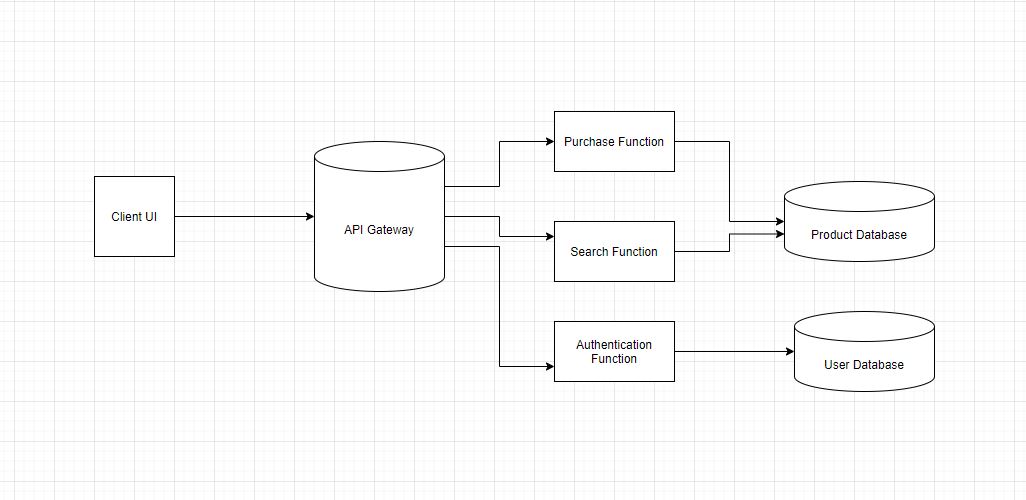In this post, I will cover Serverless Architecture Patterns. With multiple cloud providers, on-premise infrastructure is out of date. By simple definition, serverless can be the absence of a server. But is that true? Not really. To start, we will find out serverless architecture basics and then its benefits and drawbacks.
What is Serverless Architecture?
Lately, serverless architecture is becoming more of a trend. The developer still writes the server-side code, but it runs in stateless compute containers instead of traditional server architecture. An event triggers this code and a third party (like AWS Lambda) manages it. Basically, this is Function as a Service (FaaS). AWS Lambda is the most popular form of FaaS.
So the definition of Serverless Architecture –
In traditional architecture, a user does activity on the UI side and that sends a request to the server where the server-side code does some database transaction. With this architecture, the client has no idea what is happening as most of the logic is on the server-side.
With Serverless Architecture, we will have multiple functions (lambdas) for individual services and the client UI will call them through API-Gateway.

So in the above architecture
- A Client UI when accessed, authenticates the user through an authentication function that will interact with the user database.
- Similarly, once the user logs in, he can purchase or search for products using purchase and search functions.
In traditional server-based architecture, there was a central piece that was managing flow, control, and security. In Serverless architecture, there is no central piece. The drawback of serverless architecture is that we then rely on the underlying platform for security.
Why Serverless Architecture?
With a traditional architecture, one used to own a server, and then you would configure the webserver and the application. Then came the cloud revolution and now everyone wants to be on the cloud. Even with multiple cloud providers, we still need to manage the operating system on the server and web server.
What if there is a way where you can solely focus on the code and a service manages the server and the webserver. AWS provides Lambda, Microsoft Azure provides Function to take care of physical hardware, virtual operating systems, and webserver. This is how Serverless Architecture reduces the complexity by letting developers focus on code only.
Function As A Service (FAAS)
We have covered some ground with Serverless Architecture. But this pattern is possible only with Function as a Service. Lambda is one type of Function as a service. Basically, FaaS is about running backend code without managing any server or server applications.
One key advantage of FaaS like AWS Lambda is that you can use any programming language (like Java, Javascript, Python, Ruby) to code and the Lambda infrastructure will take care of setting up an environment for that language.
Another advantage of FaaS is horizontal scaling. It is mostly automatic and elastic. Cloud provider handles horizontal scaling.
Tools
There are a number of tools available for building serverless architecture functions. This particular Serverless Framework makes it building an easy process.
Benefits
- The key benefit of using Serverless Architecture is reduced operational cost. Once a cloud provider takes care of infrastructure, you do not have to focus on infrastructure.
- Faster Deployment, great flexibility – Speed helps with innovation. With faster deployment, serverless makes it easier to change functions and test the changes.
- Reduced scaling cost and time. With infrastructure providers handling most of the horizontal scaling, the application owner doesn’t have to worry about scaling.
- Focus more on UX. Therefore, developers can focus more on User Experience (UX) with architecture becoming easier.
Drawbacks
After all, there are tradeoffs with any architectural design.
- Vendor Control – By using an infrastructure vendor, we are giving away the control for backend service. We have to rely on their security infrastructure instead of designing our own.
- Running workloads could be more costly for serverless.
- Repetition of logic – Database migration means repetition of code and coordination for the new database.
- Startup latency issues – When the initial request comes, the platform must start the required resources before it can serve the request and this causes initial latency issues.
Conclusion
In this post, I discussed Serverless Architecture Patterns and what makes it possible to use this pattern. I also discussed the benefits and drawbacks. If you have more questions about Serverless Architecture, please post your comment and I will be happy to answer. You can subscribe to my blog here.
References
- Serverless Architecture – Serverless